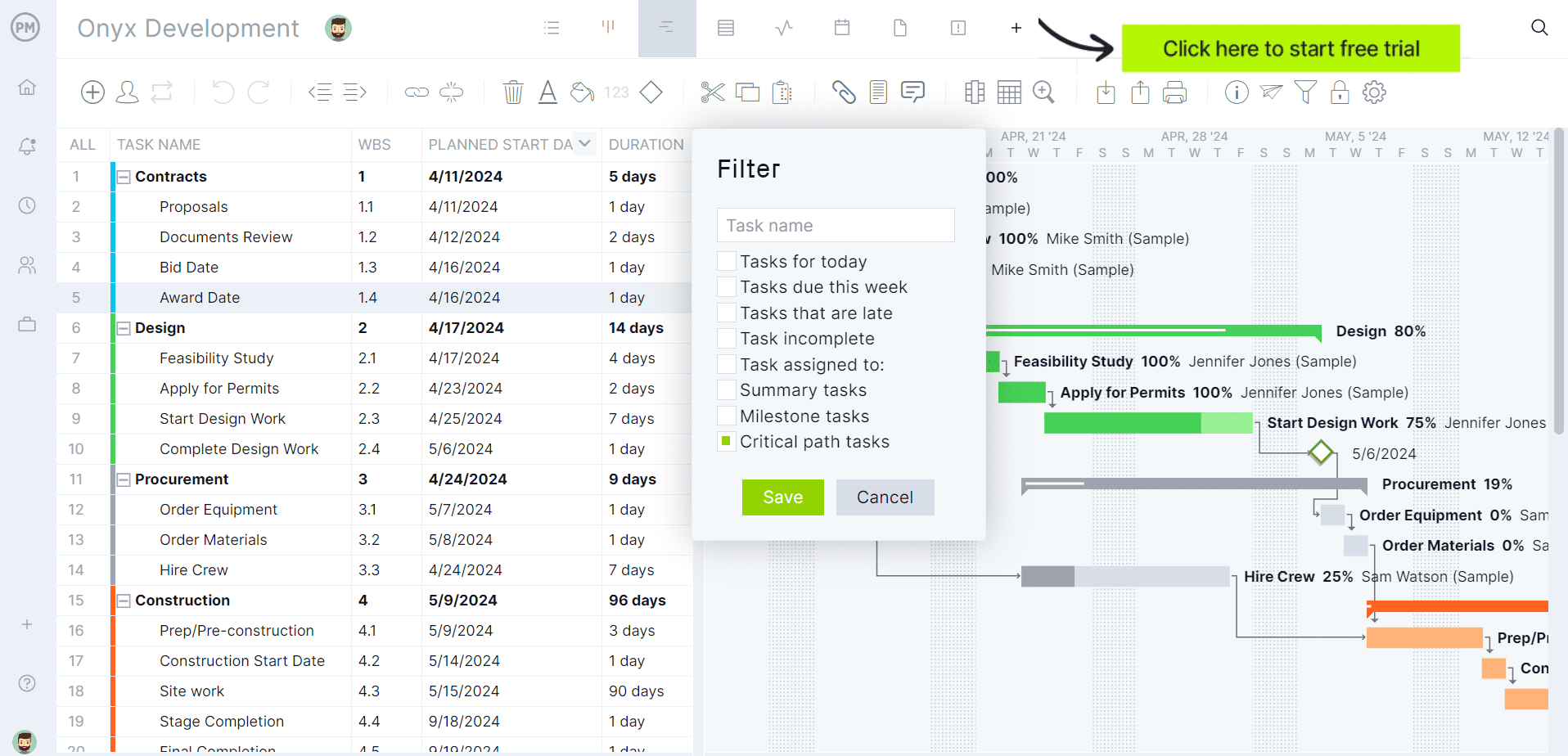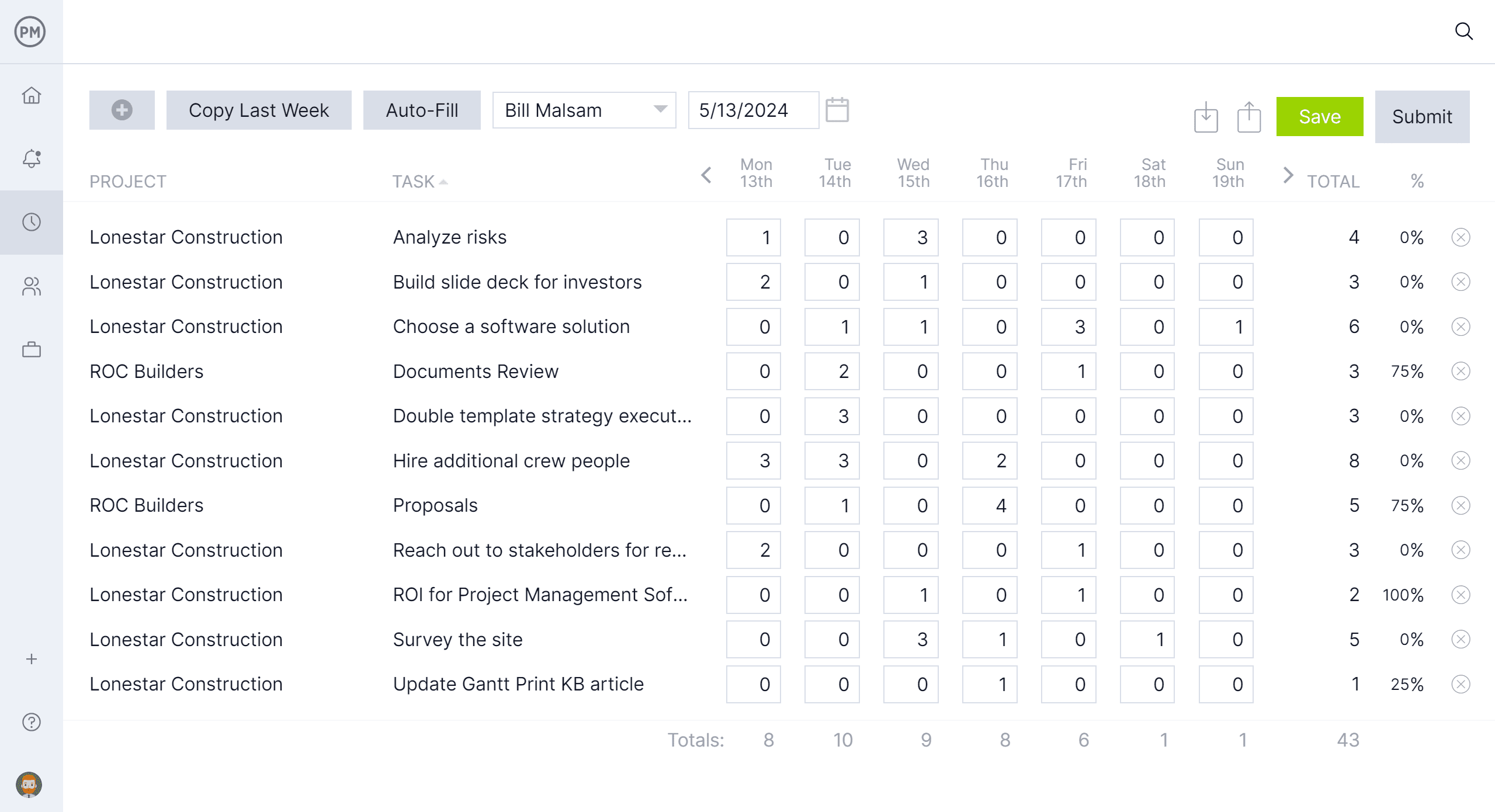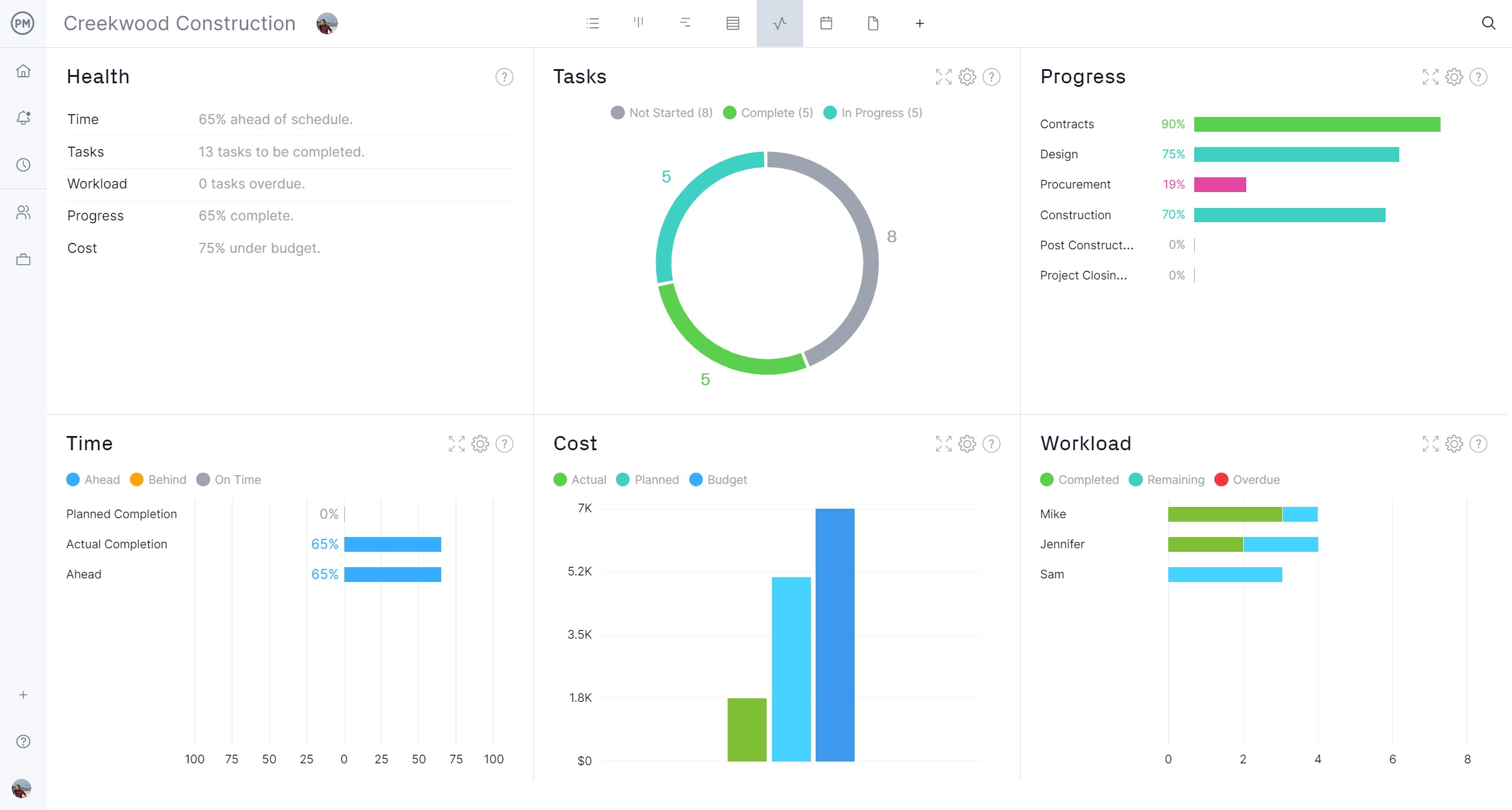The construction process is how projects in that field are broken into more manageable parts. Creating a building, bridge, warehouse or any structure is daunting when starting with nothing and having to create something complex.
That’s where the building construction process comes in by working in stages that focus on specifics. These construction process steps make overwhelming projects possible. Let’s define those construction process stages and explain how to manage them.
What Is the Construction Process?
The construction process is the entire sequence of activities involved in creating a built structure, such as a building, bridge, road or infrastructure project. It encompasses all phases, from the initial concept and design to the completion and handover to the owner.
The building construction process involves numerous stakeholders, including architects, engineers, contractors, suppliers and regulatory authorities, each contributing their expertise to make sure the project is completed efficiently, safely and to the specified requirements.
Defining the construction process stages is only the start. General contractors know that to manage those phases they require project management software. ProjectManager is award-winning project and portfolio management software that construction managers prefer. Let’s see why.
First, our software has robust Gantt charts that schedule tasks, resources and costs. But unlike other Gantt charts, we can link all four types of task dependencies to avoid delays and cost overruns so you can keep your profit margins. It’s easy to filter for the critical path and a baseline can be set to track progress in real time.
These plans can be shared across different project views. Subcontractors can execute their work on powerful task lists that have unlimited storage to attach as many files and photos as needed, and they can add tags, show progress and much more. Or they can use kanban boards to visualize workflow. Stakeholders can stay updated on the calendar view for a monthly project view. Get started with ProjectManager today for free.

Steps in the Construction Process
The construction process is typically divided into several key phases, each of which plays a critical role in delivering a functional and compliant structure. Let’s review each of these stages.
1. Pre-Construction Phase
This phase includes the project initiation, which defines goals, budget and timeline. Architects and engineers design plans, while permits are pulled from government agencies and the project ensures it complies with regulations. There’s also a site analysis during this stage. Surveys are conducted, soil tested and environmental assessments are made.
2. Site Analysis and Preparation
At this point, the construction crew is clearing the site of any vegetation, debris and existing structures. There is also excavation and grading to level the site and prepare it for the construction of the foundation.
3. Foundation Construction
Now comes the digging of the footings, which is excavating areas for slabs on which the foundation will stand. This lays the groundwork to lay the foundation, which is done by pouring concrete or masonry for a solid base.
4. Structural Framing
Once the foundation has been laid, it’s time to erect the framework for the structure. This entails building walls, floors and roofs using steel, wood or concrete. Supports are also installed by adding beams, columns and trusses for structural integrity.
5. Enclosure
At this time, the construction crew is ready to add roofing. Roofing materials are installed to waterproof the structure. Exterior walls are also built. Crews add cladding, insulation and windows.
6. Systems Installation
Subcontractors for these specific trades will then install the heating, ventilation and air conditioning (HVAC) systems, electricians will lay wiring, outlets and paneling, while plumbers set up pipes, fixtures and water systems.
7. Interior Work
At this point in the construction process, drywall and insulation can be installed on the interior walls and ceilings. Flooring is also done, such as laying tiles, carpets and hardwood. Lastly, painting and finishes are applied, including trim work.
8. Post-Construction
Once the build is done, the construction process is not yet complete. It has to go through a post-construction phase, which commonly includes activities such as inspections to ensure the project complies with all building codes and regulations. There’s also a punch list that identifies and fixes minor issues or incomplete tasks.
A final cleanup will prepare the site for presentation or use and occupancy permits are secured for legal approval for the building to be used. Finally, there’s the handover. This is the transfer of the completed project to the owner or client, along with any relevant documentation, such as warranties, maintenance schedules and as-built drawings.
How to Manage the Construction Process
Managing the construction process is necessary to ensure projects are completed on time, within budget and to the required quality standards. Managing the construction process steps requires planning and executing several key components. They are explained as follows.
Define the Scope of Work
The scope of work (SOW) outlines the specific tasks, deliverables and objectives of the construction project. To define the scope of work, begin by identifying and detailing the project deliverables, outline exclusions and set milestones and deadlines. Be sure to collaborate with stakeholders.
Forecast Resource Requirements
Resource forecasting involves predicting the materials, equipment, labor and other resources needed for the project. In construction, the material takeoff (a detailed list that outlines the exact quantities and types of materials needed to construct a project) and a bill of quantities (a list of all materials and labor needed to complete the project) are essential.
Estimate Costs and Make a Construction Budget
Creating a construction budget involves estimating the total project cost, including all materials, labor, equipment and overhead. To do this, start by itemizing costs, using historical data to help with accuracy and considering contingencies. Don’t forget to factor in inflation and track ongoing costs.

Get your free
Construction Budget Template
Use this free Construction Budget Template for Excel to manage your projects better.
Make a Construction Schedule
A construction schedule outlines when each task or milestone is expected to be completed during the project. It is critical for tracking and delivering the project on time. To build a schedule, identify all tasks, determine task durations, establish dependencies and set milestones. Be sure to allocate buffer time and use a scheduling tool, such as Gantt charts, critical path method and construction project management software.
Create a Risk Management Plan
A risk management plan identifies potential risks that could negatively impact the project and outlines strategies to mitigate them. It begins by identifying risks, assessing the likelihood and impact of their occurrence and developing mitigation strategies. It’s also important to monitor risks and document them in a risk log.
Establish Quality Assurance and Control Guidelines
Quality assurance and control make sure that the construction project meets all design specifications and regulatory standards. First, define quality standards, then implement inspections and testing, defining the acceptance criteria. Be sure to train workers and use checklists to ensure quality standards are being met.
Define a Change Management Process
Changes to the scope, schedule or costs are inevitable, but managing those changes effectively is critical to the project’s success. Therefore, establish a formal process, assess the impact of changes and document all of them. Track how changes affect project progress and adjust schedules and budgets as necessary.
Create Daily Construction Logs
Daily construction logs are used to document the project’s progress on a day-by-day basis and track important activities. They also track weather conditions, document safety incidents, log work hours, monitor progress against the schedule and communicate with stakeholders.
Who Participates in the Construction Process?
The building construction process involves a wide range of professionals and stakeholders, each contributing specialized knowledge and expertise to ensure the project is completed successfully. Here’s a brief overview of those key participants in the process of construction.
- Project owner or client: Individuals or organizations that finance and commission the construction project. They define the project’s objectives, budget, timeline and overall scope.
- Architects: They’re responsible for the project’s design, creating architectural plans and making sure the design meets both the functional needs of the client and regulatory standards.
- Engineers: Depending on the project, there can be one or all of these types of engineers. A civil engineer ensures the building is safe; civil engineers focus on planning, design and construction of infrastructure; and a site engineer manages the technical aspects of the construction project.
- Job site supervisor: Oversees the daily operations of a construction site, ensuring that work is completed on time, within budget and in compliance with safety regulations by managing the workforce, coordinating materials and monitoring progress.
- General contractor: An entity or individual responsible for overseeing the entire construction process, including hiring and managing subcontractors, coordinating work and delivering the project as contracted.
- Subcontractors: These are specialized contractors hired by the general contractor to complete specific tasks, such as electrical work, plumbing, HVAC, masonry, roofing, drywall, painting and landscaping.
- Construction workers: The people who perform the physical labor to build and maintain infrastructure, such as roads, buildings and power plants.
- Quality control inspector: These professionals are responsible for verifying that all construction work being done adheres to the project’s specifications, blueprints and quality standards by regularly inspecting materials, workmanship and the building process.
- Surveyors: Uses specialized equipment to precisely measure and mark the location of different property features to make sure that buildings and structures are built in the correct position and according to the design plans.

How ProjectManager Helps Manage the Construction Process
The building construction process is straightforward, but managing all those moving pieces to deliver the project to meet the client’s expectations and keep the general contractor’s profit margin intact is complicated. Construction project management software is designed to make that work more efficient and effective. ProjectManager is award-winning project and portfolio management software that helps manage one or multiple projects. Multiple project views allow general contractors to schedule on powerful Gantt charts, while teams execute on task lists and kanban boards, and stakeholders can stay updated on progress with the calendar view.
Robust Resource Management and Cost Tracking Features
When onboarding teams, managers can set their availability, including PTO, vacation and global holidays, as well as skill sets, which makes it easier to assign tasks. Then visit the color-coded workload chart to get an overview of resource allocation. If some are overallocated or underutilized, balance the team’s workload from that page to keep everyone working at capacity without threatening burnout. There’s also a team page that provides a summary of everyone’s activities, daily or weekly, which can be filtered to show priority, progress and more. Secure timesheets streamline payroll but also provide a window into labor costs to keep to budgets.

Monitor the Construction Process With Real-Time Dashboards
General contractors need to track more than just resources to deliver projects on time and within budget. For a high-level overview, they can toggle to the real-time project or portfolio management dashboard. There, colorful, easy-to-read graphs and charts display metrics like time, cost, workload and more. To get deeper into the data, managers can use customizable reports on status, portfolio, workload, timesheets, variance and more. Filter the reports for greater detail or summarize progress and share with stakeholders to keep them informed.

Related Construction Project Management Content
The construction process is part of the larger construction project management. For those who want to learn more about this larger subject, below are a handful of recently published articles on construction phases, documents, contracts and more.
- Construction Phases: Documentation, Templates & Steps
- Construction Documents (Templates Included)
- Types of Construction Contracts: Pros, Cons & Best Practices
- Key Construction Job Titles: Overview & Salary
- Why Use a Gantt Chart in Construction Project Management
ProjectManager is online construction project and portfolio management software that connects teams whether they’re in the office or on the job site. They can share files, comment at the task level and stay updated with email and in-app notifications. Get started with ProjectManager today for free.



